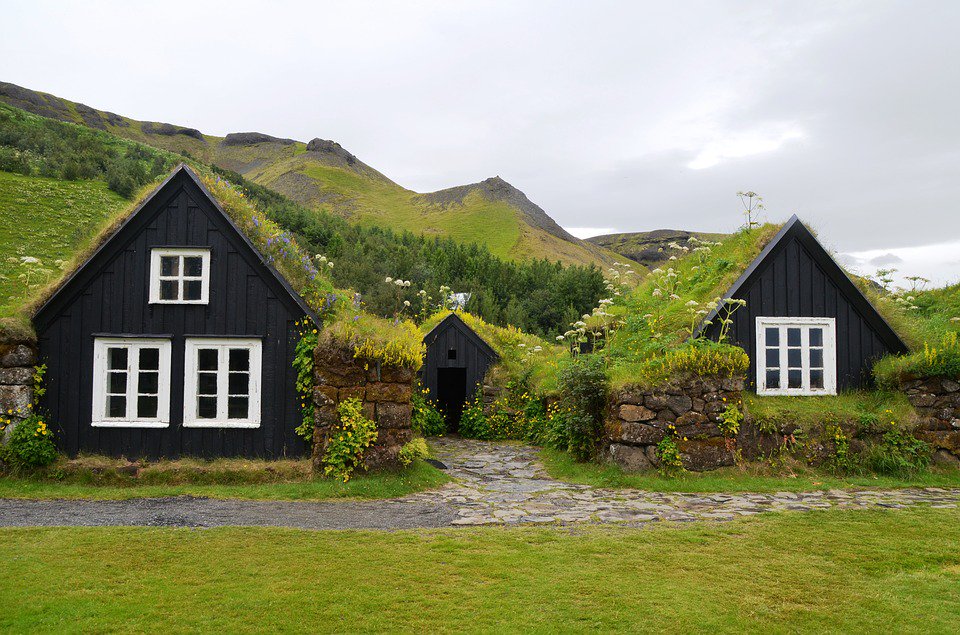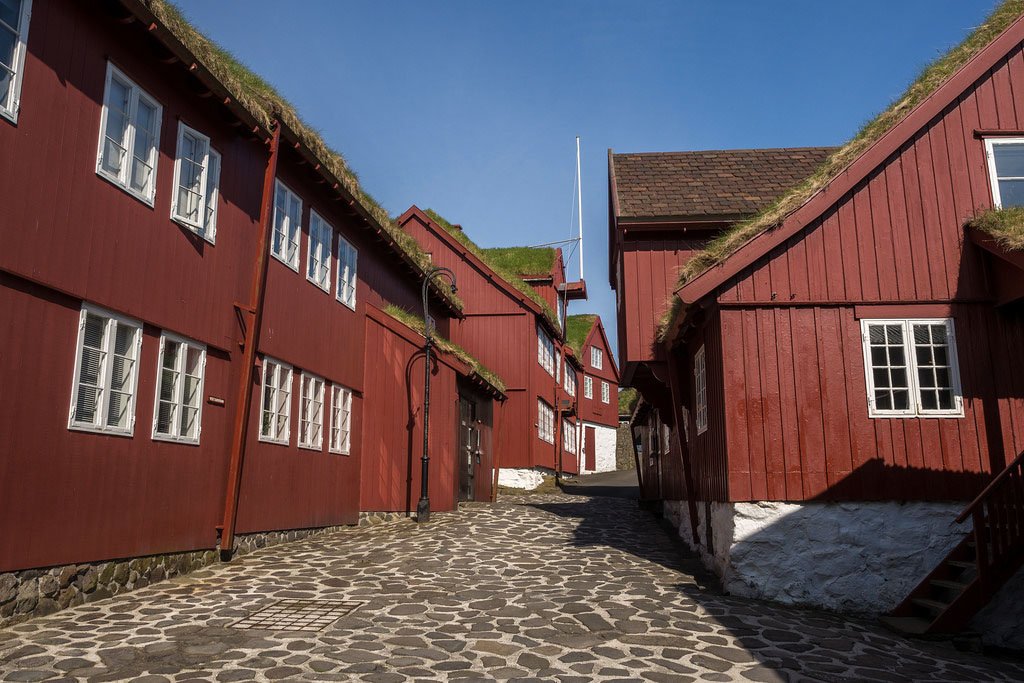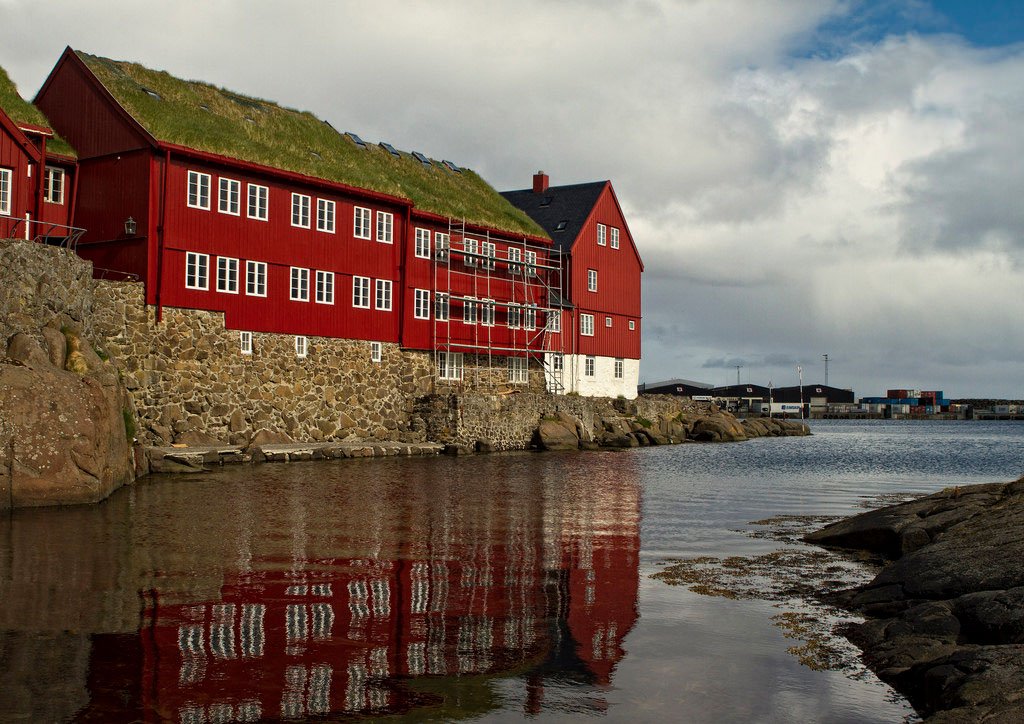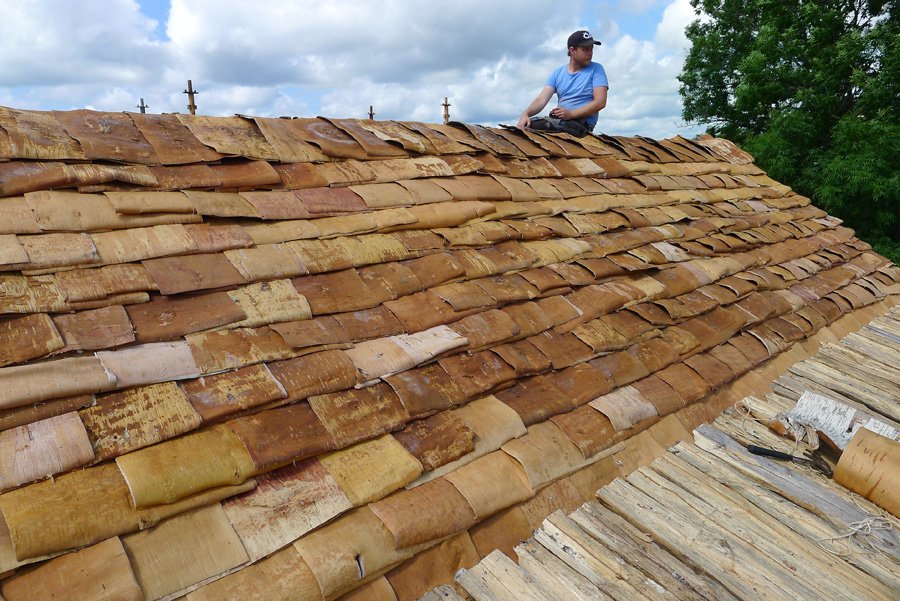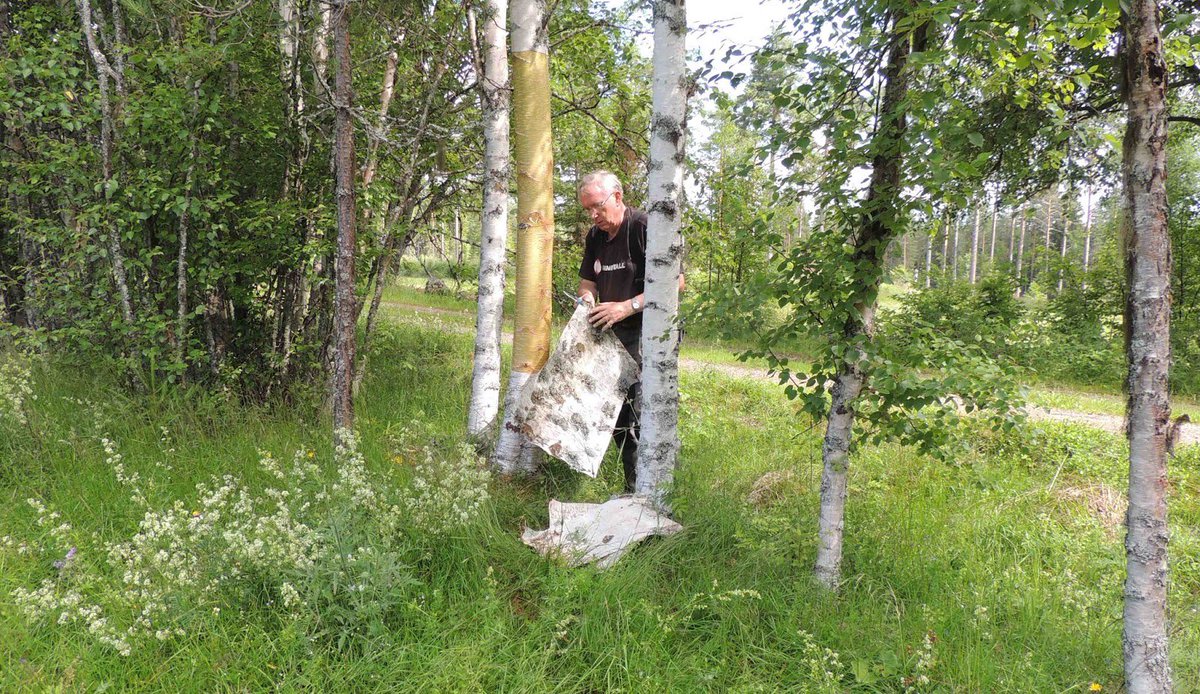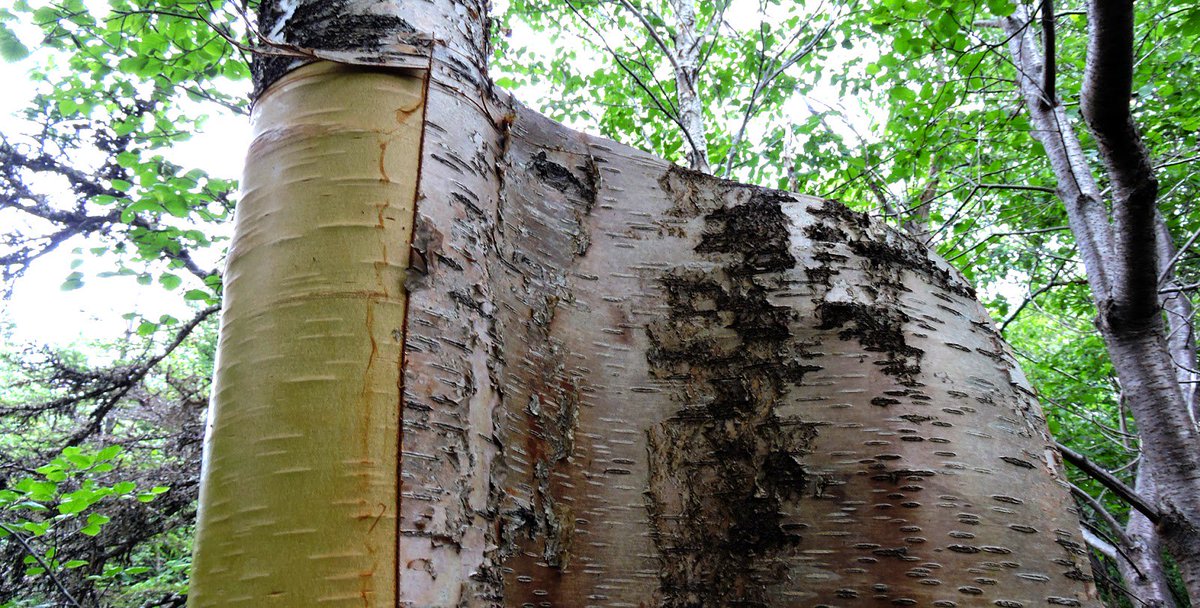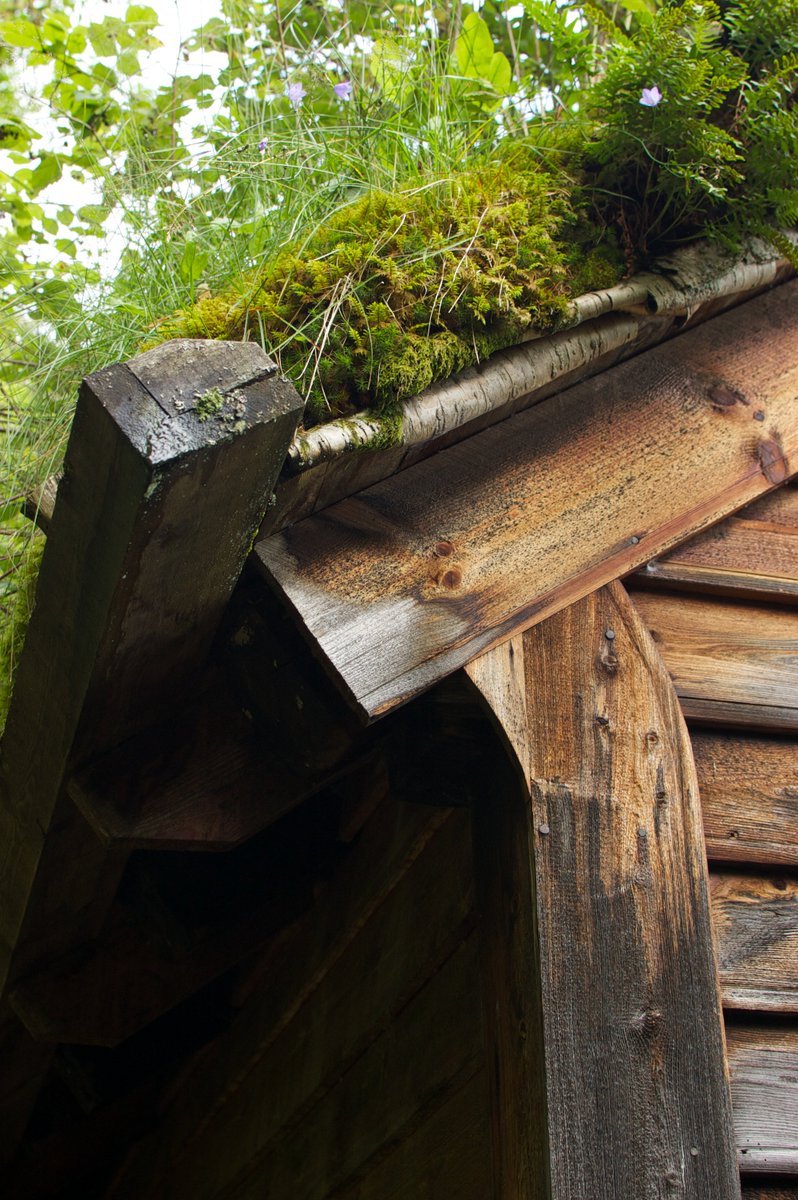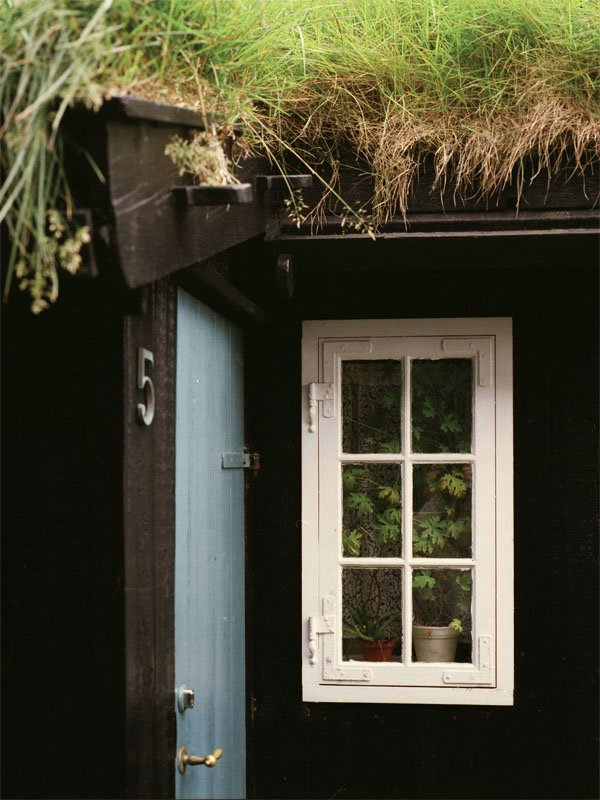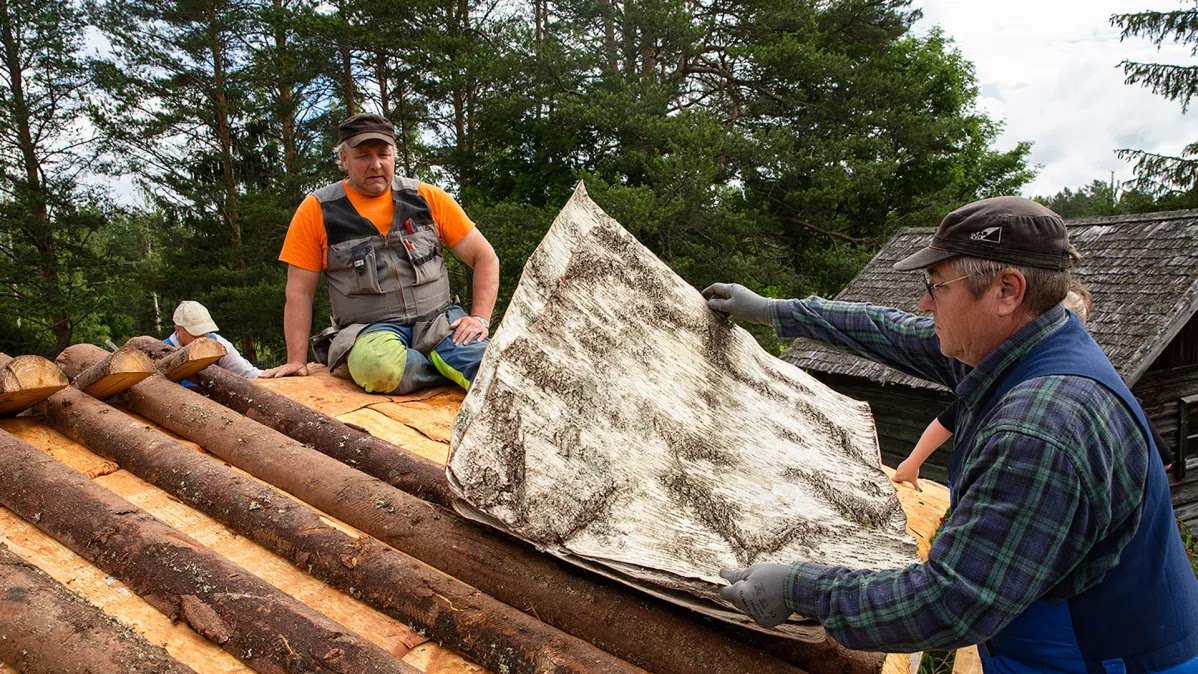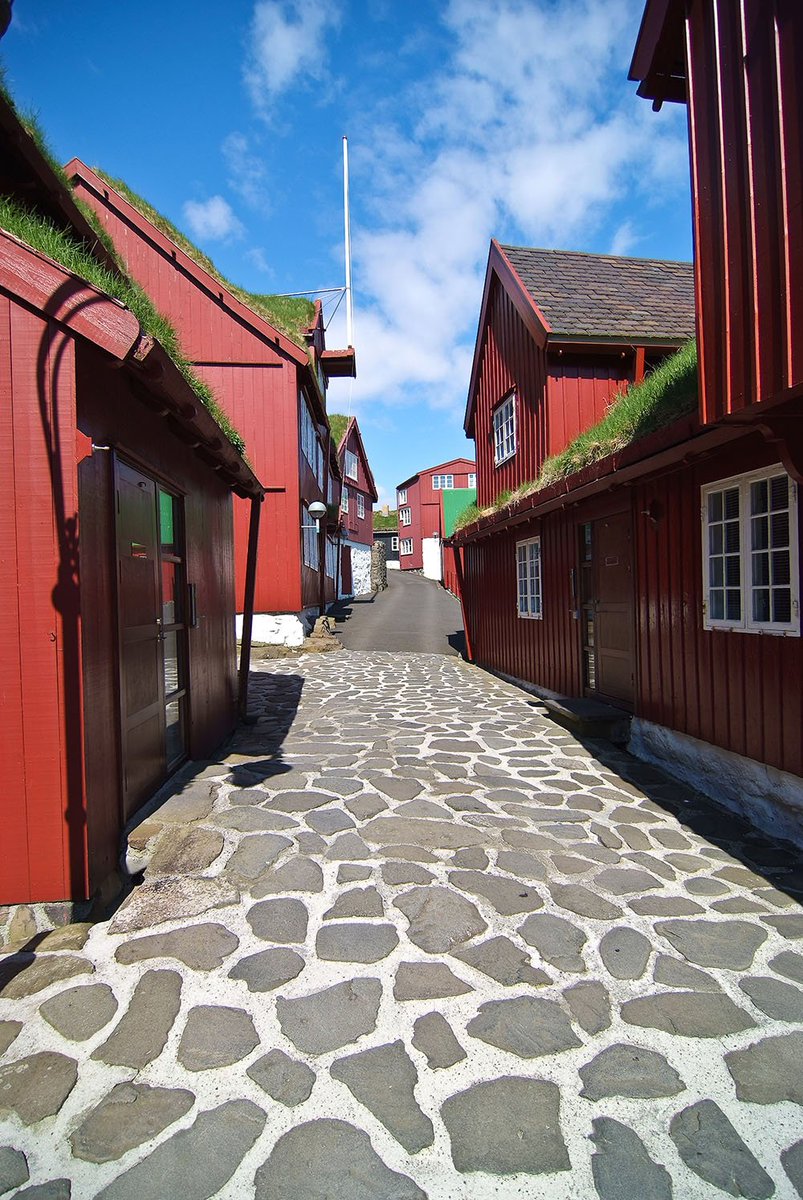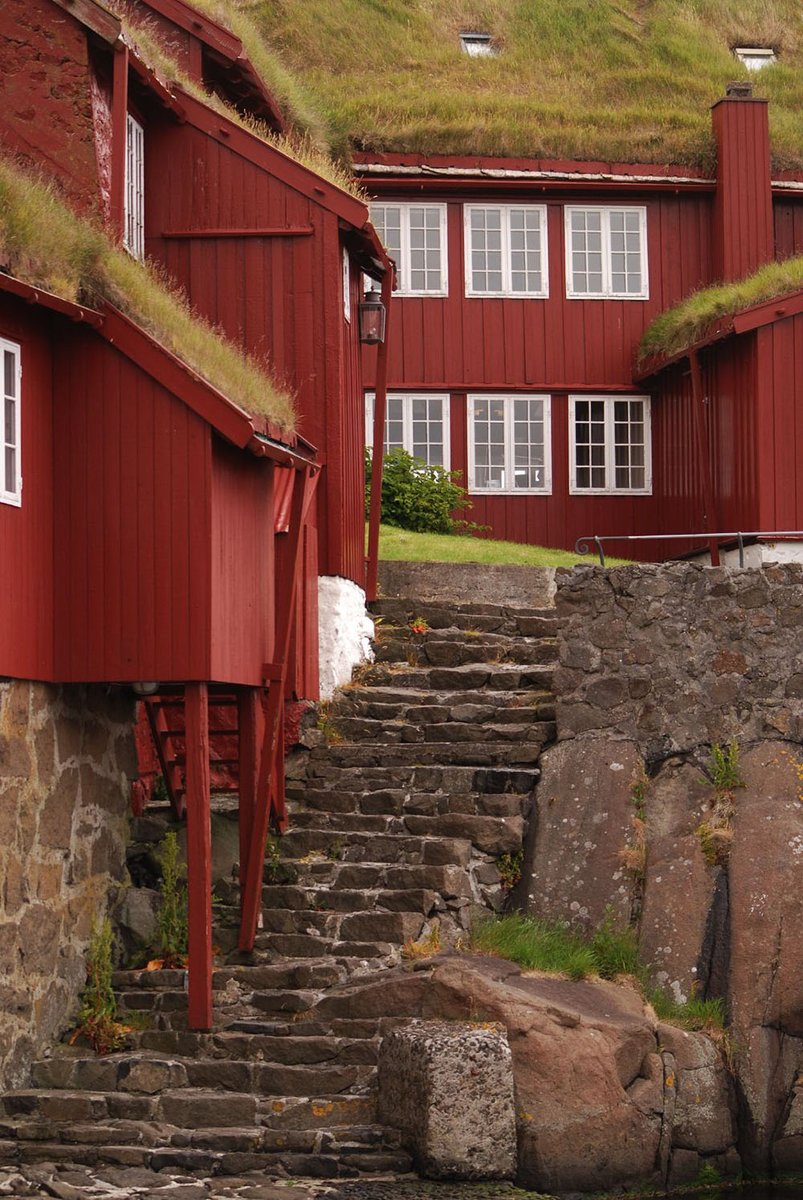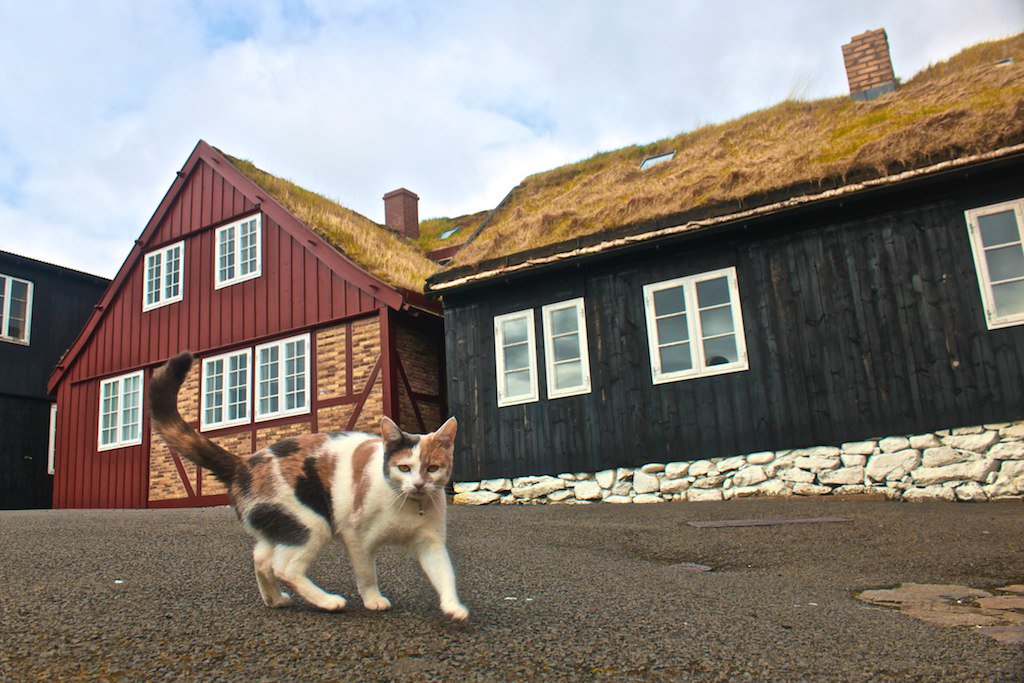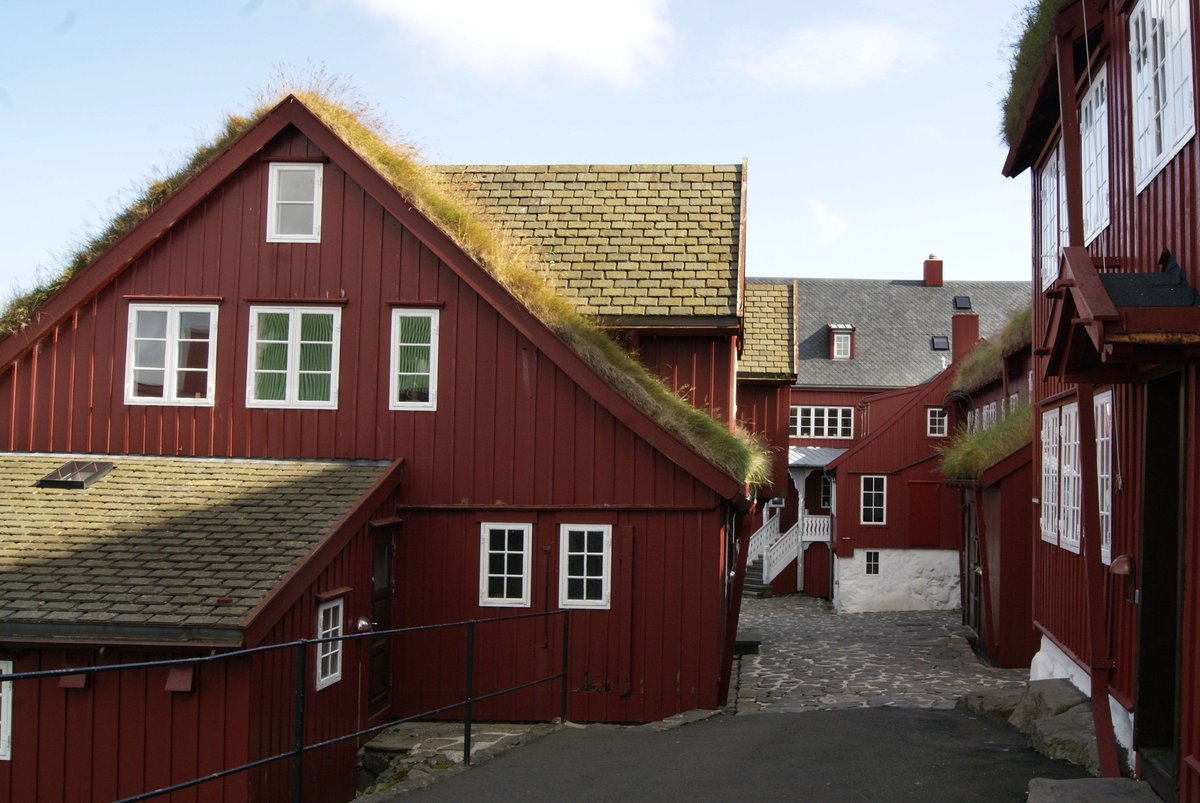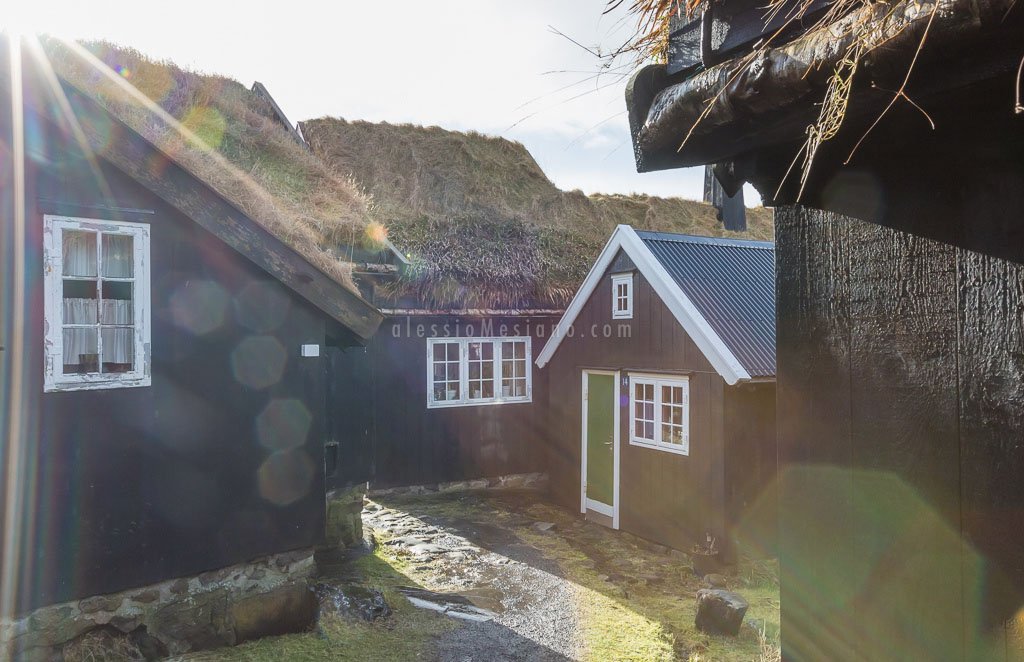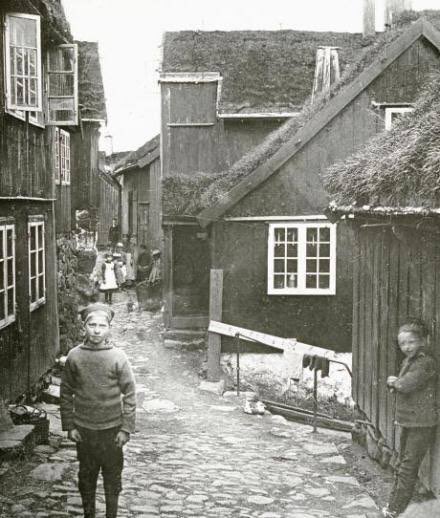Everyone loves a green roof, and done right and at the right places it can be by far greener and more sustainable than any other imaginable roof. Better yet, the materials are free and by far the simplest to lay. A teenager can learn it in a day. But are they possible in cities?
Take Torshavn, the capital city of the Färö islands in the North Atlantic and completely modern. Its old quarter, Tinganes, is built largely with green sod roofs, a densely populated (for this climate) urban environment.
A sod roof, built by locals and with completely local materials, are as useful on small cottages and farm structures as they are on commercial buildings and larger apartment buildings.
The sod roof also mean that the urban area of Tinganes naturally and without regulations maintain a uniform look as all sod roofs are built with a similar pitch (not flat and not more than 45 degrees), and "age" at the same pace, whether one year old or one decade old.
People usually focus on the beautifully alive sod, which is just a square of sod cut right off the ground, but in reality the hero of this roof system is simple birch bark, harvested and laid face down in layers, up to about six deep. Birch bark is waterproof and rot resistant.
To harvest birch bark all you need is a knife and a bit of patience. In early summer you cut and then peel it. No need to cut all around it either, a simple slice is good enough. If you do it well the tree is unharmed and will keep producing bark for years to come.
Cut too deep however and you risk hurting the tree and killing it. Many forestry managers are happy to be rid of birch trees though, but you& #39;ll need to check with the owner first!
In rougher constructions you can see the birch bark sticking out underneath the sod or turf, but you can also smarten it up with a simple baseboard construction. The baseboard will take a lot of water damage and it is normal to exchange it a couple of times for the duration.
A trad. sod roof has a plank board base, then the birch bark in six layers, then the sod. The sod is kept from sliding down by a sturdy baseboard, or better, a set of naturally crooked juniper roots. The sod is optional, it is just to weight down the bark. Logs, stones work too.
How charming would not a couple of blocks or streets of this be in a northern city? You would not have to buy a single nail to complete it.
Moderns who are scared of traditional material ("you want to put WHAT on the roof of my house?!") will use rolls of a plastic mat instead of birch bark, as the owner of this house did (you can see it peak through at the bottom). It works but why spend the money when bark is free?
Of course the sod acts as great free insulation, but that is just a bonus. If you live uphill you can save even more money by buying half the bottom floor. A tiny piece of wall is all you can see in this gorgeous North Atlantic vernacular. This owner used both plastic and bark!
A green sod roof can be combined (but it is not nearly as tricky as with a regular modern material roof) with dormers, skylights, solar panels, etc. The wet climate also gives the roof a free and natural fire proofing: soggy earth.
So whether or not you have cottage near the fjords or a town house on the streets of Anchorage, you might want to consider a green roof for your next self build.
Another interesting thing with sod roofs versus modern roof materials: they fit right in. Look at these faux and synthetic slate roof next to a couple of real sod roofs. The sod roofs (who might be newer) does not look out of place, unlike most modern materials, always jarring.
Contrast with this image of a lone corrugated tin roof among a group of sod roofs: the metal roof looks out of place. If it was the other way around, the lone sod roof would blend in.

 Read on Twitter
Read on Twitter